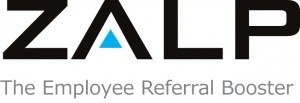5 Ways In Which You Can Position Employee Referrals To Your Management

An often overlooked but nevertheless important factor in the success of an employee referral program is the support extended by the management team. A referral program supported openly and visibly by the management team in company meetings and gatherings invariably garners more participation from employees who have a tendency to follow their leaders. But getting management support is not an easy task. Management needs to be first convinced that the employee referral program is worth investing by both company and their own time and efforts before they agree to openly endorse the program and encourage employees to support the organization by participating in the referral program.
How you position your employee referral program to the management team ultimately determines its success with regards to garnering support from them. You need to first understand management expectations from the program in terms of business results and align your positioning of the referral program accordingly to answer those expectations.
Below are 5 ways to position employee referrals to ensure they are perceived as important initiative by management:
• Return on Investment is essentially the one indicator most often used by management to decide which initiatives are important and which are not. Be sure to include ROI numbers based on reasonably correct assumptions while positioning your referral program to the management. This means calculating both the expense and investment required to run the program including employee bonuses, marketing etc as well as the expected benefits and savings of running this program.
• Human capital is another good index to use while positioning your referral program to management. The growth of organizational human capital in terms of better quality manpower, higher retention rates more productive teams as well as a more engaged workforce are all strong data points to position your referral program on.
• Slow hiring can often cost the company dearly in terms of lost opportunities and inability to expand as per plan. The impact of faster and more effective hiring by using employee referrals as well as savings of time and effort of the HR and Recruitment team which can be used more productively elsewhere are also important takeaways from the referral program to put in front of the management team.
• Since employees act as brand ambassadors to promote the organization in referral programs, employee referrals also have a huge positive impact on your employer brand, that too without having to spend anything on expensive promotions or advertising. A good employer brand is a lasting asset, one which is bound to get management attention and incline them towards the referral program.
• Lastly, the best selling point to use with management is that employee referrals cost significantly lesser than any other sources of hiring while also helping draw passive candidates to the organization. A referral program rests on the assumption that high performers know other high performers who might not actively be looking out but could be persuaded to join if approached by a friend. The possibility of hiring superior talent increases vastly if employees anchor the discussion, which is why referrals play such a vital role in the talent strategy of the company.
Position your program to the management to include these key elements and you are sure to get all the support you need from the management.
